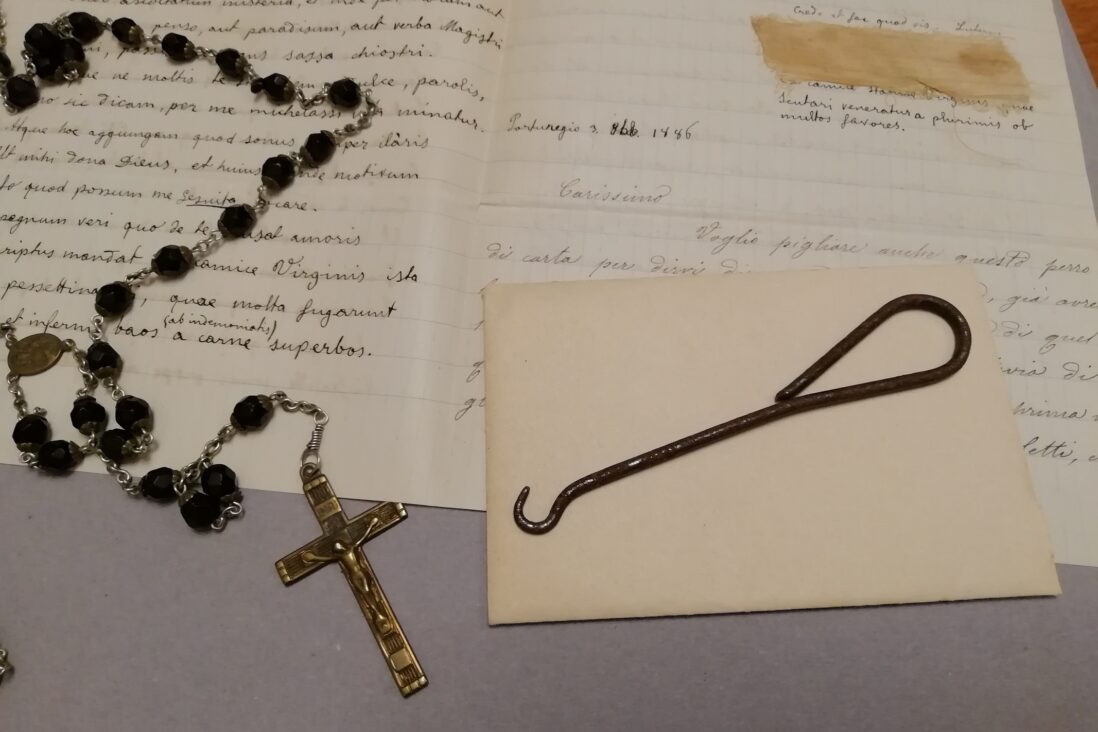So many surprises in a file

One would think that a Jesuit’s personal file would only contain official documents related to his religious life, i.e. letters and certificates.
Documentary reorganisation, however, always holds many surprises.
In the course of rearranging the personal files of the historical provinces, many curious objects and artefacts have come to light that had remained in the personal papers of Jesuits.
In one father’s file, for example, a package was found rather soft to the touch, which once opened revealed its contents: locks of hair, including those of the Jesuit as a child and of his sisters, given to his grandmother and then perhaps kept by the religious when the relatives passed away.
Among the papers of Fr. Girolamo Pasi is his rosary, blessed by Pius XII in 1950, and for Fr. Girolamo Pasi is his rosary, blessed by Pius XII in 1950, and for Fr. Giovanni Wiedinger the personal rosary remains along with seven medals obtained during the First World War.
In the correspondence of Fr. Pavoni attached to a letter received from a confrere, there is a strip of cloth, about six centimetres long, “ex camice satutae Virginis quae Scutari veneratur a plurimis ob multos favores”: it comes from the statue of the Virgin venerated in Scutari for the many graces she has granted.
In other archival units, dried flowers, leaves and edelweiss were also found, when they were not yet considered endangered and it was not forbidden to pick them. These finds could also be of interest to botanists.
There are also numerous medallions of the Virgin Mary, relics in small glass cases or war awards.
Among the most frequent metal objects are the numerous medals awarded for military valour, both in the First and Second World War, in bronze with the inscription ‘minted in enemy bronze’ or the famous iron cross of merit.
In Brother Luigi Sartirana’s file, a strange object was found: a sort of ‘S’-shaped hook that turned out to be a ‘buttonhook’ tool used to fasten the buttons of boots in use between the late 19th and early 20th century.
Frequently, third class relics emerge: strips of cloth, passed over second or first class relics and inserted into cards with devotional prayers on the saint.
Occasionally, but more rarely, small glass cases have been found with first-class relics: fragments of bones or dust from the limbs of saints and saints.
Maria Macchi











